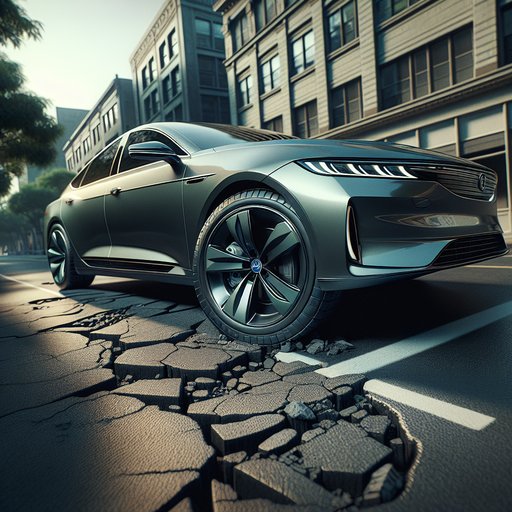
We spent a week with the 2025 Camry XSE Hybrid to focus on secondary ride, wheel impact harshness, and suspension noise across rough urban streets and patched suburban backroads.
Our test car was a 2025 Toyota Camry XSE Hybrid (FWD), the new hybrid-only generation with a 2.5-liter Atkinson four and Toyota’s latest hybrid drive, rated at 225 hp. It rides on 19-inch wheels wrapped in 235/40R19 all-season tires, with MacPherson struts up front and a multi-link rear, sport-tuned for XSE. Curb weight is roughly 3,540 lb; with two occupants and gear we were near 3,650 lb. Tire pressures were set to the door placard 35 psi cold.
Testing covered 300 miles, including a dedicated 25-mile loop of cracked concrete, pothole patches, frost heaves, and short, sharp speed humps. Ambient temps ranged from 58–72°F. We ran repeated A/B passes at 25–45 mph and used a handheld sound meter at the driver’s ear plus a seat-rail accelerometer to log vertical shake. No adaptive damping here, so impressions reflect a single fixed suspension tune.
Secondary ride—how the body settles after the initial hit—is generally well-controlled for a mass-market sedan on big wheels. Over washboard and checkerboard patches at 35–40 mph, the Camry avoids the float and aftershake that plague softer setups, with the body settling in roughly one cycle. That said, the combination of the sport tune and 40-series sidewalls makes the ride read as “busy” on broken asphalt, especially at urban speeds where the suspension doesn’t have time to breathe between imperfections. The rear axle is better isolated than the front; small-amplitude chatter is felt more prominently through the front seats and steering column.
Wheel impact harshness on sharp edges is moderate for the class. Square expansion joints and shallow potholes elicit a firm, quick jolt rather than a crash, suggesting bump stops are well-matched and the dampers have sufficient high-speed compression. On deeper hits at neighborhood speeds, you can feel the front struts approach the bump stops, but there’s no metallic slap. Compared with LE/XLE on 17–18s, the XSE’s lower-profile rubber transmits more of the initial step into the cabin.
Our sound meter showed brief spikes about 3–5 dBA over baseline on the harshest impacts—noticeable, but not wince-inducing. Suspension noise is impressively contained given the low engine NVH of the hybrid. Most road scars produce a muted thump rather than a hollow bang; there were no clunks or top-mount knocks over diagonal speed humps. The rear multi-link is particularly quiet, while the front end lets through a touch of strut “shuck” over closely spaced ripples.
Structure-borne noise through the steering column is present but never coarse, and there’s minimal resonance from the rear shelf or trunk area. Wind and tire roar on coarse-chip surfaces mask some suspension sounds at 50+ mph. Overall, the XSE Hybrid’s ride skews taut and composed, prioritizing body control over pillowy compliance. On truly broken pavement it stays cohesive, but shoppers sensitive to sharp-edge impacts and low-speed busyness should sample the LE/XLE on smaller wheels—or consider swapping to a softer touring tire.
Keep pressures at placard, and if you live with winter heaves, the AWD’s slight extra mass may take a faint edge off primary impacts. As specced, the XSE balances control and refinement well, but the calmer trims deliver better secondary ride on rough city streets.












